May 6, 2025 | 13:53 GMT +7
May 6, 2025 | 13:53 GMT +7
Hotline: 0913.378.918
May 6, 2025 | 13:53 GMT +7
Hotline: 0913.378.918
Dear sir, how do you see Quang Ninh’s advantages in terms of aquaculture?
Quang Ninh is one of the provinces with many special strengths in the marine economy in general and marine farming in particular. The coastline is 250 km long, accounting for about 8% of the length of the country's coastline. Quang Ninh's sea and islands create a unique terrain with 2,078 islands, accounting for more than two-thirds of the country's islands. The islands are spread out on the sea surface, creating a very well shielded water area.

Nguyen Huu Dung, Chairman of Vietnam Seaculture Association, said that Quang Ninh aquaculture is still small in terms of scale compared to other economic sectors, but this field has great potential for development. Photo: Hong Tham.
One more special thing is that in terms of economy, Quang Ninh possesses a very comprehensive production industry. The industrial economy and mining have created another feature for Quang Ninh to approach society in an industrial way, which is relatively different from the agriculture-centered residential areas. Therefore, all industrial elements are more easily absorbed into the population, which facilitates the application of new technologies as well as the development of agriculture in general.
What are your thoughts on the speed and scale of the Quang Ninh marine farming at present?
Quang Ninh has raised the issue of marine economic development since 2014. The Party's resolution on marine economic development is in 2018, which means that Quang Ninh had a very early start compared to other localities. Thus, it can be seen that the development of the marine economy has been set out by Quang Ninh province in a relatively comprehensive way.
Policies such as "increasing farming, reducing exploitation" have been established by Quang Ninh from a very early stage. Or when it comes to the issue of marine farming development, Quang Ninh is also the first province to set out local standards. Quang Ninh starts early, so it has to reach the finish line early!
With opportunities come challenges. In your opinion, what are the big obstacles in the process of accelerating the sea farming development of Quang Ninh?
Quang Ninh went early, and so were the obstacles. The first problem is the management of the marine environment and marine space.
In the management of marine space, the problem lies in planning. Currently, the national marine spatial planning has not been developed or promulgated, which is nearly ten years behind the requirements. Due to a lack of national planning, Quang Ninh waters are also affected.
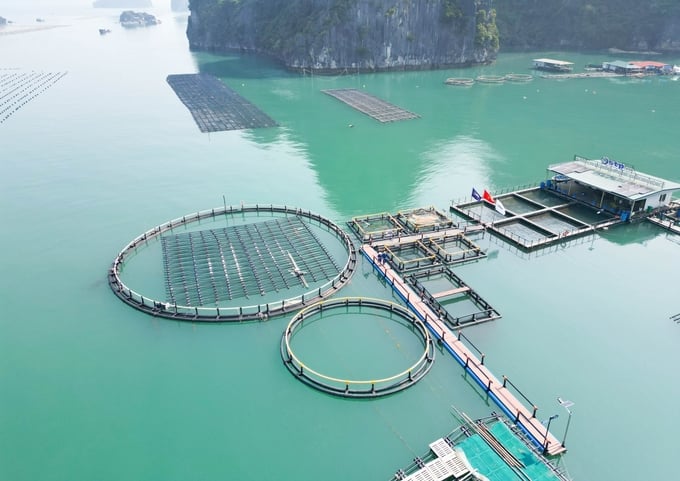
The marine farm combining the experience tourism of STP Group at Phat Co island, Van Don, Quang Ninh. Photo: STP Group.
As for the second obstacle, to be able to develop industrial marine aquaculture, investment is required. But if you want to invest methodically, fishermen as well as organizations and businesses need to be granted the right to use the sea area for a long enough time.
The third obstacle is the policy for marine aquaculture development. Although there is already a scheme on marine farming development to 2030 issued by the Prime Minister under Decision No. 1664/QD-TTg, Quang Ninh still needs to develop specific schemes and plans for its own application in particular conditions.
The fourth obstacle is human resources. Quang Ninh is an industrial province, but human resources to develop industrial marine farming are completely absent, only counted on one hand.
And the last obstacle, but also the first concern: It's a matter of money. When it comes to finance, there are a lot of things to consider. Investors never use 100% of their own capital but instead use loans from banks or other shareholders. Marine farms are sometimes worth billions of Vietnamese dong, but they are not considered property by banks because they have not been registered and assigned property numbers. Therefore, “Where’s the money” is not simply about the financial situation, but also related to standards and regulations; insurance; registration; and the bank.
Difficulties are also clearly seen, so in order to "solve the challenges", bring Quang Ninh marine farming to "a new level", what direction should Quang Ninh need to go, sir?
We have to untie each "knot" in turn. First of all, it’s planning. While pending the national plan, Quang Ninh should proceed with a series of plans that the province receives approval from the Prime Minister.
Second, Quang Ninh needs to develop step-by-step basic standards. This province has already developed Standard 06 on materials, so it should continue to develop the standards that the marine aquaculture industry requires for each culture object.
Third, it is necessary to build industrial marine farming models. Fourth is the issue of appointing provincial units to conduct registration and registration.
Thank you, sir!
Translated by Samuel Pham
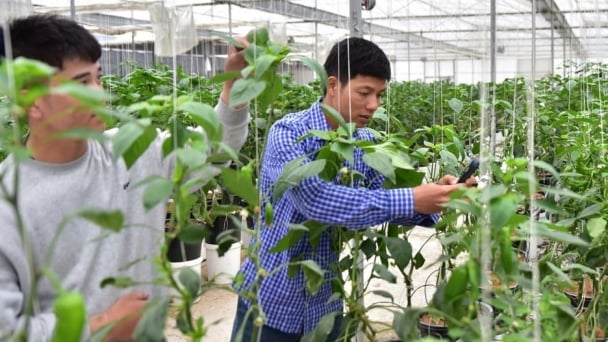
(VAN) The Smart Farming for the Future Generation project supports local farmers in releasing natural enemies to promote sustainable and environmentally friendly farming.
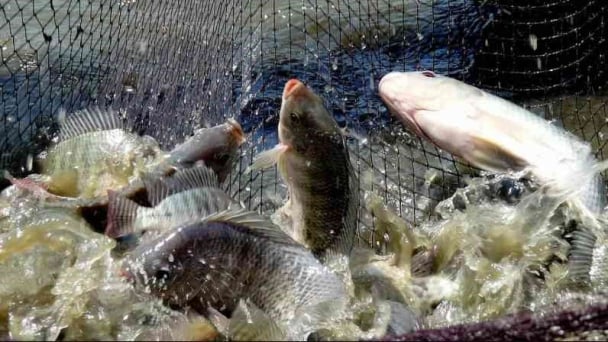
(VAN) Mr. Tran Dinh Luan said that tilapia is entering a favorable phase, opening up opportunities to develop a value chain and increase seafood export value.
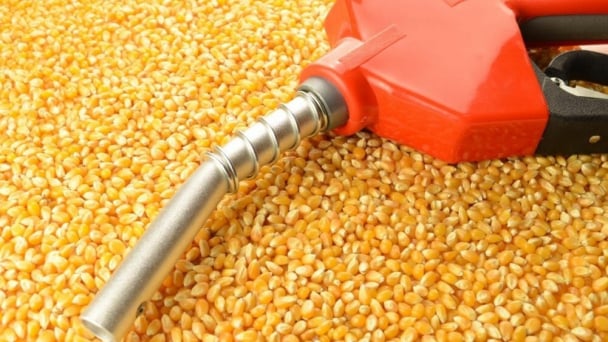
(VAN) More African countries have mandated the implementation of policies backing the blending of ethanol in gasoline as the continent invests in projects promoting new industrial uses for locally produced grains.
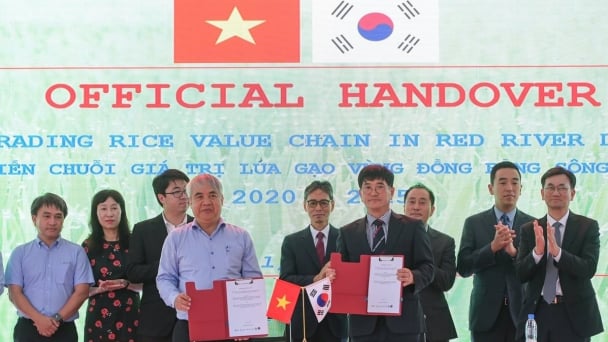
(VAN) On 28 April, Korea officially transferred the Upgrading Rice Value Chain in Red River Delta project to Vietnam, marking five years of successful cooperation in agricultural development between the two countries.
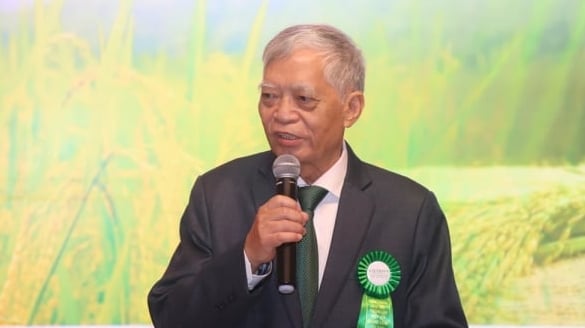
(VAN) Dr. Bui Ba Bong affirmed that the 1 million hectares of high-quality, low-emission rice project aims at increasing farmers' income.
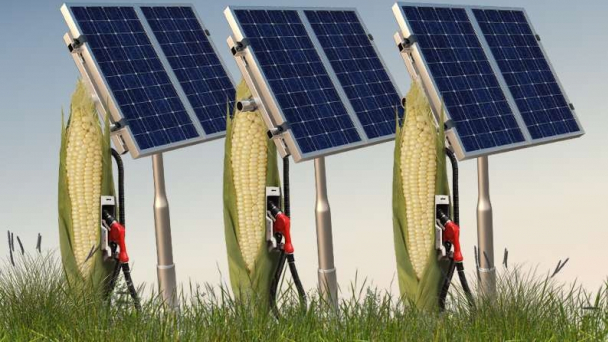
(VAN) In fact, it would require about 31 hectares of corn ethanol to produce the same amount of energy generated by one hectare of land covered in solar panels.
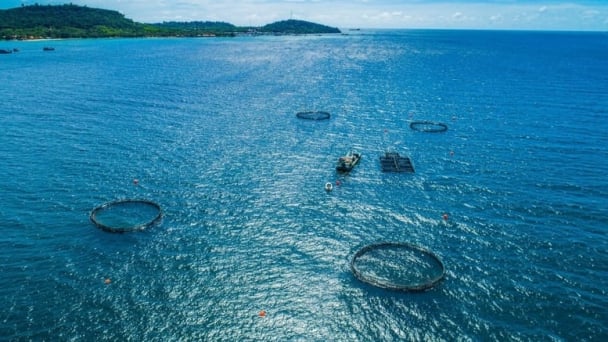
(VAN) Vietnam aims to effectively implement marine biodiversity conservation initiatives and the Fisheries Strategy, thereby improving the livelihoods of coastal communities and fishermen.